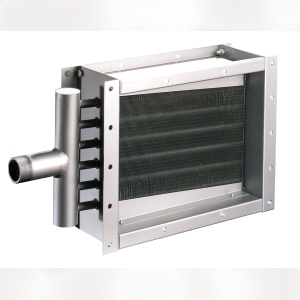steam coils are capable of transferring greater amounts of heat energy than other types of coil heat exchangers, but they require correspondingly higher pressures and temperatures. Steam coils must be engineered to withstand greater stresses, particularly those resulting from expansion between cold and running conditions.
SPC's long experience in the design and manufacture of steam coils will prove invaluable when brought to bear on your particulasr application.
High-pressure transmitters of heat energy
A steam coil is a heat exchanger. It transfers heat energy from steam to another medium (usually air) as quickly and efficiently as possible. The heat energy comes from three sources: the cooling of the steam, the latent heat of condensation, and the subsequent cooling of the condensate.
During the heat exchanging process, the steam condenses to water. Steam enters the coil, but hot water leaves it. That requires careful coil construction and installation to ensure that the condensate always runs down through the coil to be drained away safely. Failure to arrange the coils correctly can lead to water logging within the coil. This in turn causes water hammer damage from condensate driven by steam travelling at up to 100km/hr.
The coils themselves consist of a matrix of copper tubes through which the steam and condensate flows. The tubes run back and forth between two end-plates in an arrangement that lets the air flow perpendicular to the tubes. The tubes pass through - and are attached to - a layered array of thin metal plates known as fins. The fins are also perpendicular to the tubes, which means they lie parallel to the direction of air flow. The air flows between them. Energy passes from the steam via the tubes and fins to the air.
The efficiency of this arrangement depends on the types and thickness of metal used, the integrity of the bond between tubes and fins, the number and the layout of the tubes and fins, the air flow, and the internal flow of condensate. Our skill lies in pulling all those elements together to make a coil that's right for your application.
Types of steam coil
Steam coils come in two formats that depend on the configuration of the tubes.
Vertical tubes run vertically downwards from a steam header to the condensate header. This is the preferred option
Horizontal tubes are never exactly horizontal. There must be a degree of slope between the steam header and condensate header to let the condensate flow.


